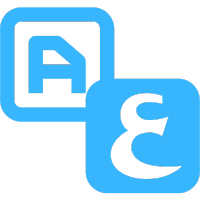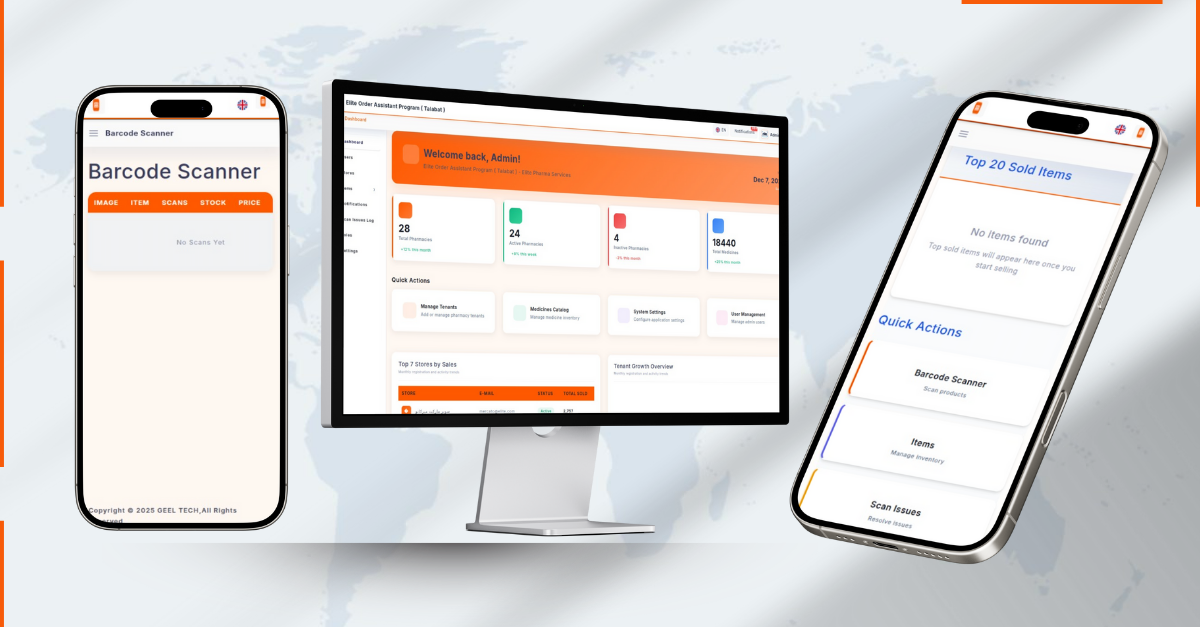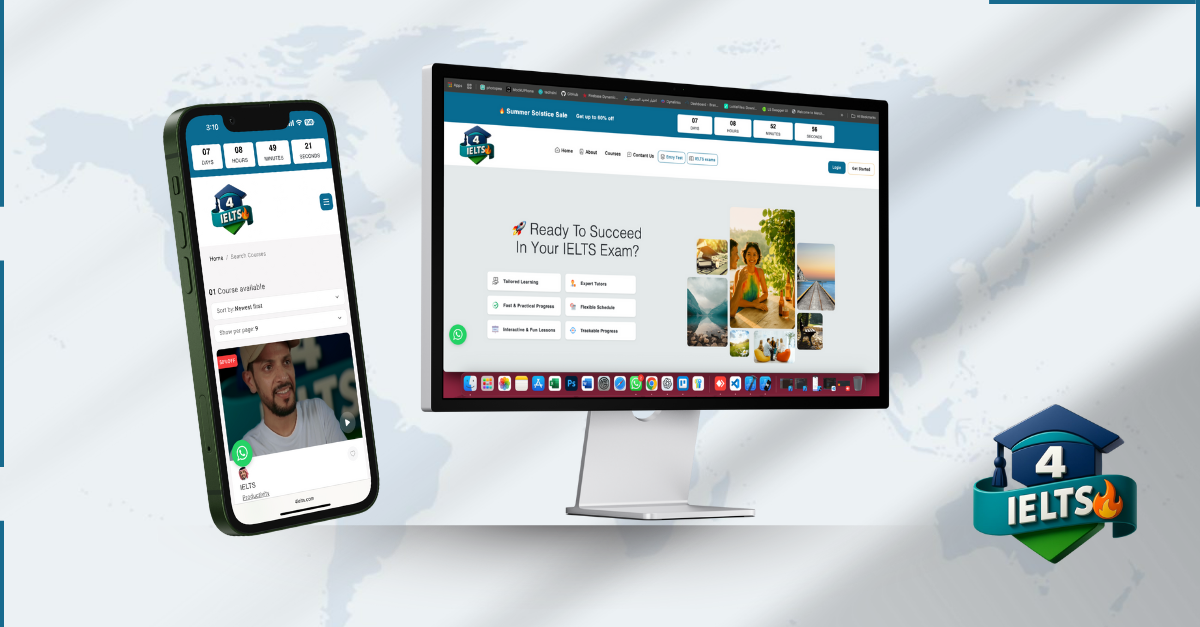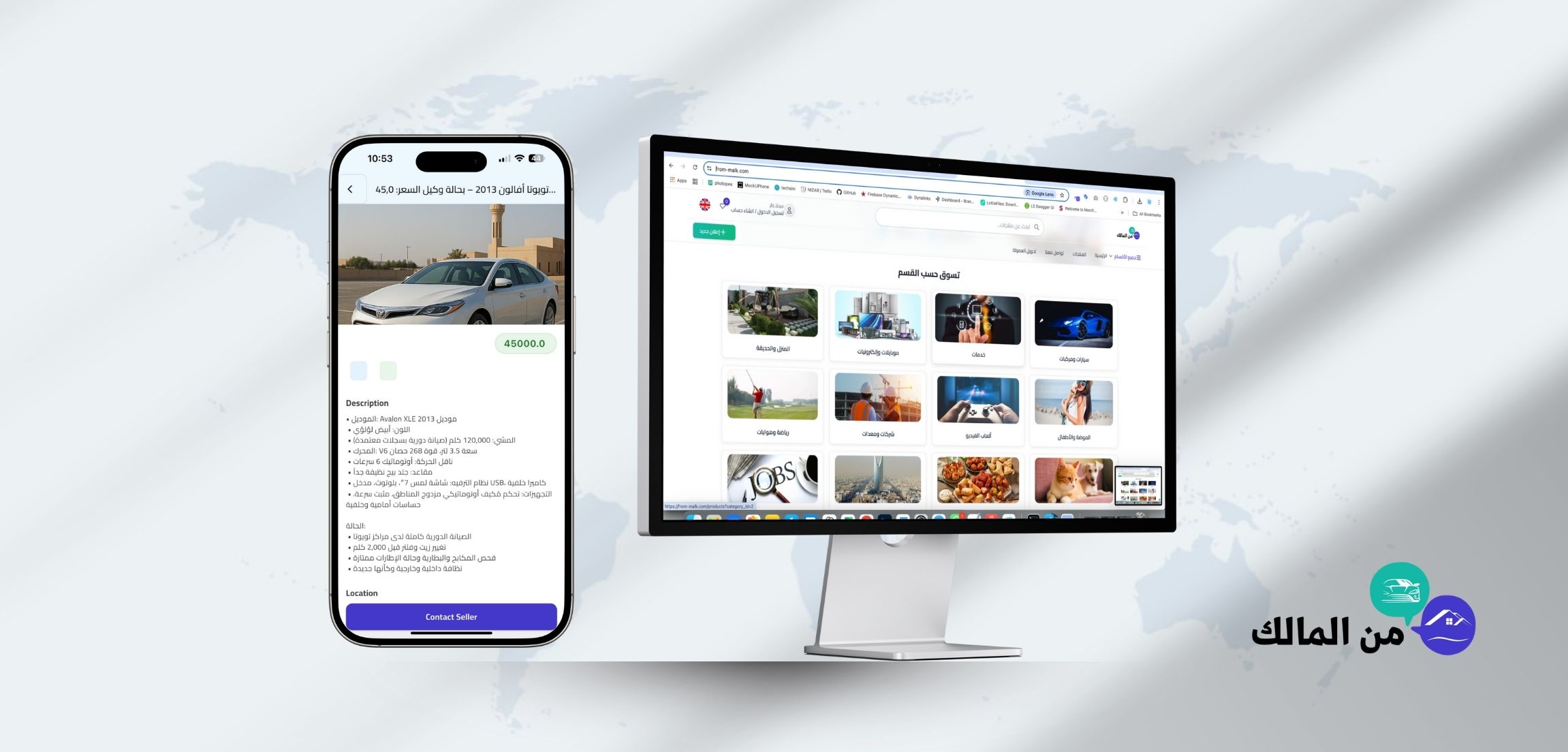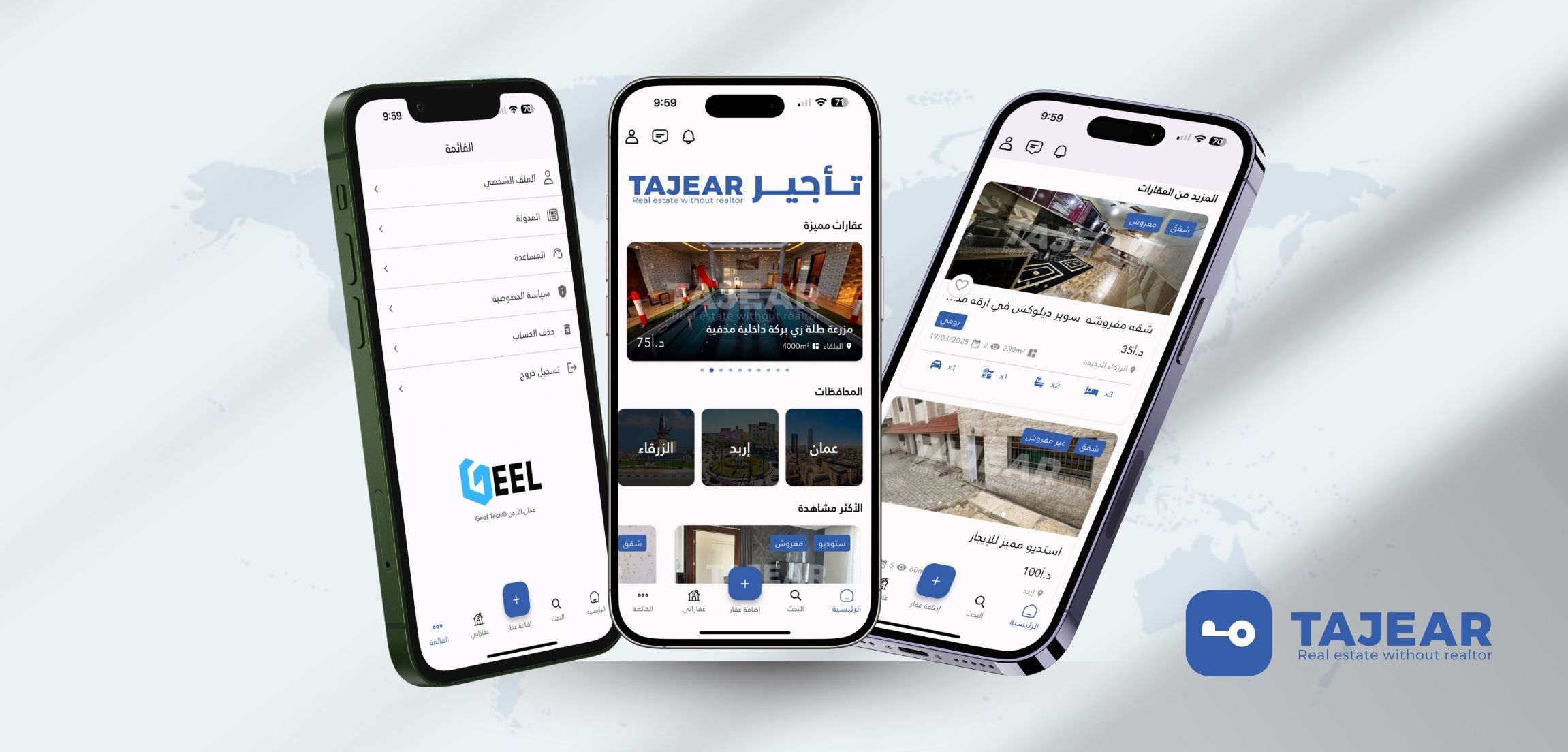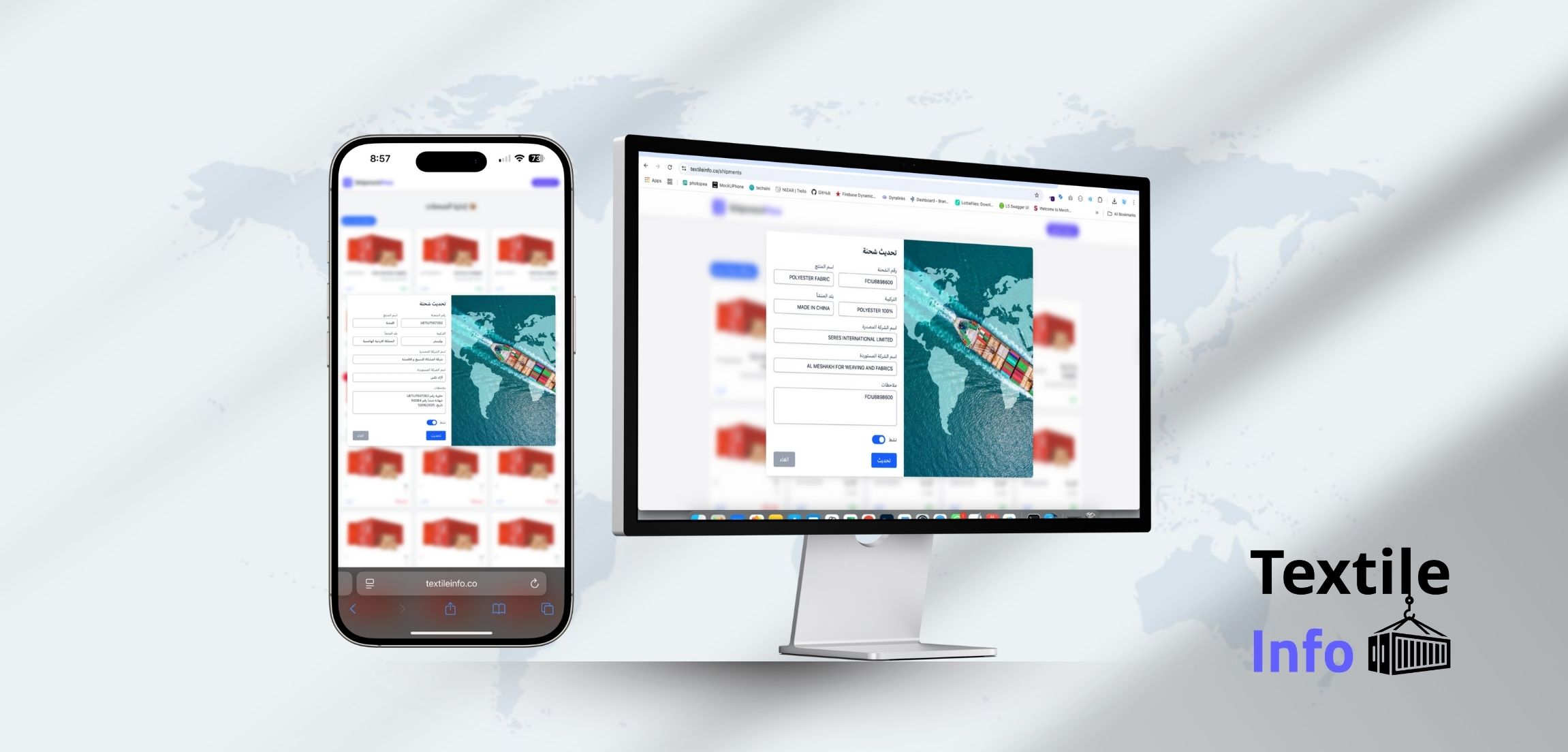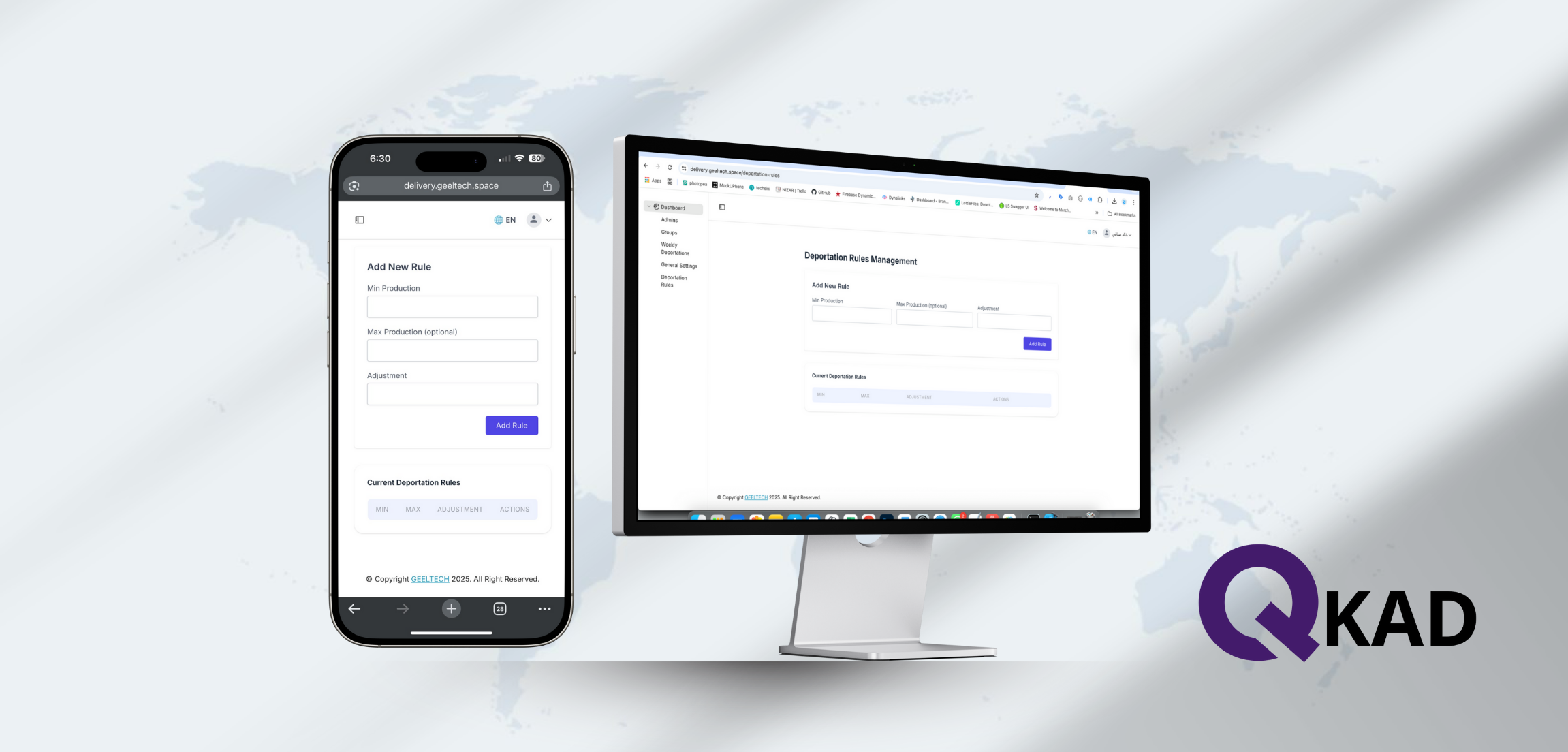Introduction: Why This Guide Is Different
If you’ve ever been promised a “blazing-fast website” or a “wow mobile app” and then received something slow, buggy, or impossible to maintain, this guide is for you. Our goal isn’t to sell—it’s to teach you how to evaluate agencies and outcomes yourself, so you can protect your budget and launch with confidence.
Reputation note: According to our official pages, Geel Tech is top-rated on Google in Jordan (2025) with consistently excellent client feedback—reflecting our focus on quality and post-launch care.
What “Quality” Really Means in Web & Mobile Projects
Quality is not just “a pretty UI.” Quality is the sum of:
-
Performance: Fast load, smooth transitions, optimized assets.
-
UX/UI clarity: Clear information architecture, frictionless flows, human microcopy.
-
Security & reliability: HTTPS, patching, backups, monitoring, error reporting.
-
Maintainability & scalability: Clean code, Git discipline, reviews, documented APIs.
-
Delivery discipline: Phased milestones, staging environments, testing, and handover.
Section 1 — How to Evaluate a Web Design Company in 60 Minutes
1) Performance (Core Web Vitals)
Ask for a short report showing LCP, CLS, and INP on real pages (not just the home page).
-
Are images converted to WebP/AVIF where relevant?
-
Is a CDN in place with proper caching headers?
-
Is lazy loading enabled for images/video below the fold?
-
Are fonts optimized (preload, swap)?
2) UX & Information Architecture
-
Logical H1/H2/H3 hierarchy and a 1-paragraph executive summary at the top.
-
Accessibility basics: color contrast, alt text, keyboard focus, descriptive links.
-
Intuitive navigation: short top menu, helpful internal links, visible contact/CTA.
3) Code & Structure
-
Git repository under your ownership (GitHub/GitLab/Bitbucket).
-
Branch strategy (main/dev), readable commit messages.
-
Code reviews on major features; components modularized for reuse.
4) Security, Hosting & Backups
-
Always-on HTTPS + HSTS where applicable.
-
OS/CMS/plugin patching policy (monthly at minimum).
-
Scheduled backups (daily/weekly) + tested restore plan.
5) Live Samples (Before/After)
Request 2–3 live links showing before/after metrics (speed, UX upgrades, conversions). If available, ask for snapshots from Search Console to prove organic gains.
Quick Website Checklist (10 points)
-
LCP/INP within recommended thresholds
-
Low CLS (no layout jumping)
-
Clean headings; key pages indexed
-
WebP/AVIF + alt text in place
-
CDN + cache control configured
-
FAQ/Organization Schema added
-
Short, obvious contact/lead forms
-
Clear conversion path (primary CTA)
-
Documented backup & restore policy
-
Git repository + code reviews
Section 2 — Choosing a Mobile App Partner
1) Flutter or Native?
-
Flutter: excellent for cross-platform speed, consistent UI, and most service/e-commerce/MVP apps.
-
Native: choose it for extremely deep device integrations or high-end graphics/gaming where every millisecond counts.
2) Performance & Bundle Size
-
Measure launch time, scroll smoothness, and data fetch latency on mid/low devices.
-
Keep bundle size reasonable; use feature splitting if necessary.
3) Quality & Testing
-
Target crash-free sessions ≥ 99.5% post-launch.
-
Enable Crashlytics (or equivalent) with alerting.
-
Run UAT on staging with real user scenarios before store submission.
4) Arabic RTL & Accessibility
-
Proper RTL layouts; right fonts; mirrored icons where relevant.
-
Inclusive UX: readable sizes, logical focus order, assistive tech compatibility.
-
Microcopy that respects local culture (Jordan & GCC nuances).
5) Publishing & Support
-
Store assets ready: descriptions, screenshots, privacy policy.
-
A 30/60/90-day update plan, plus a light product roadmap.
Quick App Checklist (10 points)
-
Crash-free ≥ 99.5%
-
Low, consistent launch time
-
Full RTL support + Arabic usability testing
-
Event/Funnel tracking implemented
-
Segmented Push notifications
-
Weekly performance & crash reports
-
API endpoints documented + Postman collection
-
30/60/90 update plan defined
-
Transparent permissions in-app
-
Admin/Content dashboard provided
Section 3 — Practical SEO for Arabic Sites + AEO for Assistants
1) Schema That Moves the Needle
-
FAQ for query-driven sections.
-
Organization/LocalBusiness for visibility in Jordan & the GCC.
-
HowTo/Article where you provide step-by-step value.
2) Content Built to Win Featured Snippets
-
Start sections with a direct, 1–2 sentence answer to the main question.
-
Use short paragraphs, numbered steps, and comparison tables.
-
Define terms in simple language (e.g., “What is LCP?” in one sentence).
3) Internal Links & CTR Optimization
-
Headlines that reflect user pain (“costly mistakes,” “fast checks,” “hidden fees”).
-
Meta titles/descriptions promising tangible value: time saved, % improvements, or specific outcomes.
-
Embed internal links to services, case studies, and contact.
4) Local SEO for Jordan & the Gulf
-
Keep Google Business Profile fresh: photos, Q&A, updates.
-
Create geo-service pages (e.g., Web Design in Amman, Mobile Apps in Dubai/Jeddah).
-
Use Arabic + English where it makes sense to match user queries.
Section 4 — Project Management Without Surprises
1) Documentation Before Kickoff
-
SOW with scope, timeline, milestone deliverables, and acceptance criteria.
-
BRD/PRD covering user stories, edge cases, and launch boundaries.
2) Change Policy
-
Signed Change Request process (time/cost/impact).
-
Clear communication cadence (daily/weekly updates; shared Kanban/roadmap).
3) Handover & IP
-
Code delivered in your repository with runbooks.
-
Full access to stores, analytics, and cloud resources.
-
License/IP ownership clearly assigned to you on payment.
Mini Case — “Cheap Now, Expensive Later”
A startup chose the absolute cheapest vendor for a website+app. The result: slow pages, frequent crashes, and no documentation. When they moved to a professional team, we had to rebuild to remove technical debt—higher total cost and lost time.
Moral: pay once for quality, not many times for patchwork.
Common Pitfalls That Kill Projects
-
Kicking off without a SOW or acceptance criteria.
-
Ignoring Core Web Vitals or testing only on high-end devices.
-
Poor Arabic RTL and inaccessible UI.
-
No analytics or conversion measurement.
-
Handover without documentation or access rights.
FAQ (Search-Intent Aligned)
1) How can I tell a professional website in 5 minutes?
Open it on a mid-range phone. Check load speed, layout stability (no “jumping”), a clear CTA above the fold, and logical headings. Confirm HTTPS, basic Schema, and visible contact info.
2) Flutter vs Native—what’s right for me?
Use Flutter for most service/e-commerce/MVP apps to move faster cross-platform. Go Native when you need deep device features or ultra-high frame rates.
3) What contract points prevent surprises?
SOW and milestones, UAT acceptance criteria, change-request policy, IP ownership, a 90-day support plan, and post-launch KPIs.
4) How do I measure app success at 30/90 days?
Track retention, crash-free %, session length, funnel conversions, and DAU/MAU. Compare before/after updates.
5) Which SEO factors truly drive revenue in Jordan & the GCC?
Speed, compelling titles/descriptions (CTR), direct-answer content, proper Schema, geo-service pages, and intentional internal linking.
Your Handover Plan (Step-by-Step)
-
Demand a clear SOW and acceptance criteria.
-
Host the Git repo under your organization.
-
Request a lightweight Design System (colors/typography/components).
-
Test performance on real devices + review CWV.
-
Validate Schema, internal links, sitemap/robots.
-
Require runbooks and a 90-day maintenance plan.
-
Ensure you own code and account access (Stores/Analytics/Cloud).
Why Geel Tech?
-
Top-rated reputation: Consistently top ratings on Google in Jordan (2025), with strong client testimonials on our official pages.
-
Outcome-first mindset: We optimize for speed, conversion, and stability—not just looks.
-
Clear methodology: SOW, milestones, code reviews, performance tracking, documented handover.
-
Arabic-first experience: Real Arabic RTL, accessibility, and content that resonates with users in Jordan & the GCC.
Conclusion + Gentle CTA
If you want to separate “nice visuals” from true quality in web design and mobile apps, use the checklists and standards above as your blueprint. If you’d like a neutral, fast assessment of your current site/app—or your next idea—we offer a free mini technical review summarizing strengths, quick wins, and an actionable next step.
Start now: share your site/app URL or a brief for your new project and we’ll send you a concise report with clear priorities.
Suggested Internal Links (to boost CTR & navigation)
-
Services: Web Design | Mobile App Development

